Mehmet Aslan – Interview, Track By Track & Sleevenotes

Swiss DJ Mehmet Aslan has built his reputation on the strength of a dazzling portfolio of unofficial edits that stretch into the heartland of his Turkish ancestry.
Combining a keen musical curiosity with a bewitching sense of what works on the dancefloor, Aslan has become a household name on the diggers’ circuit, with EPs on labels like Huntleys & Palmers and Dischi Autunno. Just recently, acclaimed Italian director Paolo Sorrentino selected his track ‘Alysha’ for the soundtrack of the HBO series The New Pope. Some years ago, Mehmet Aslan began discovering little-known ‘80s post-punk and underground gems from Switzerland, music emerging at a time when synthesizers and samplers became the norm in DIY music-making, and when a youth movement was changing the cultural landscape in Switzerland.
In 1976, punk rock brought an urgently needed musical revitalisation that, initially and for the most part, concentrated on the urban centres of Switzerland. But punk was also essential for the subsequent post-punk era of the 1980s, with its many varied and new musical achievements that hail from the whole of the country. All of the songs selected for this compilation were recorded during this groundbreaking and brilliant post-punk period of Swiss music history, from 1980 to 1990.
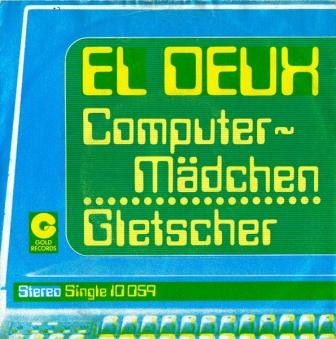
It was like a wild laboratory for all forms of new and strange tones, sounds, noises, rackets and compositional experiments, often accompanied and also inspired by cutting-edge developments relating to electronic musical instruments. At the same time, a broad, contemporary and innovative music scene came into existence for the first time in this country. Another effect was that the four different language and cultural regions of Switzerland were no longer perceived to be an obstacle. The curiosity for the foreign and the strange, whether from abroad or simply regional, was greater than any notion of scepticism. All in all, new acquaintances were made, while conflicts for freedom and free spaces were carried out and experiences were gained that together could be expressed musically.
Most interestingly, any profit-oriented exploitability of musical creativity was not really emphasized. Magda Vogel from UnknownmiX confirms this in the book Heute und Danach: The Swiss Underground Music Scene of the ‘80s published in 2012. This non-commercial approach is probably also the common denominator for all the songs on this compilation. It is therefore not surprising that hardly any of the acts presented here actually met each other at that time or that they are still known today; aside from maybe Liliput from Zürich, who were able to build on the previous success enjoyed by Kleenex.
Although these are all Swiss productions, the music is neither physically nor mentally bound to specific places in the Alpine region, except perhaps El Deux with their song ‘Gletscher’ (Glacier). The musicians from Bells Of Kyoto were actually mostly based outside of Switzerland. Christian Pfluger from Die Welttraumforscher sings about moon folklore, Jürg Nutz about a labyrinth, while Dr. Chattanooga & The Navarones found inspiration through African marabout business cards. The American-born Marlene McCarthy from Elephant Chȃteau wrote about UFOs that visit a palace. Heinrich Zwahlen and Micheline Pfister were Aboriginal Voices. Then, there is a Schamanen Circel and a Café Türk. Finally, with Schaltkreiss Wassermann things go arabesque, while Fizzè cooks up all the world’s musical ingredients in his ‘Cuisine’.
Another example with a view beyond the borders of Switzerland is Mehmet Aslan, responsible for the song selection of this compilation. After growing up in Basel, he now lives in Berlin and has a great affinity for electro and Turkish music. Thus, several songs also have what can be described as oriental influences. Overall, his selection is impressive and novel. He did not merely choose some of the more well-known tracks, but expertly selected the unusual, atypical and often even flat-out obscure musical gems of the Swiss post-punk era.
As a result, Mehmet also guarantees to provoke curiosity for more of this kind of music. Although some records are nowadays difficult to find as originals it is still possible – thanks to the numerous re-issues on vinyl, CD or releases on digital platforms – to listen to the expanded musical oeuvre of the acts presented here and that of many other kindred Swiss artists. A recommendation to go ahead and to do just that is actually given by this superb compilation! © 2020 Lurker Grand / swisspunk.ch
Senza Decoro stuck with me because it encapsulates a quite specific spirit of artistic independence.
Mehmet, how did you come to do this project?
One of the first Swiss acts I discovered was KonX, via an Italian blog, and I later managed to find a copy of their album at 16 Tons record store in Zürich. Another major discovery for me was a 45 by El Deux, ‘Gletscher’. I was surprised to learn that such far-reaching music originated in Switzerland and it really encouraged me to dig further into the electronic music of that period. I then created a mix and interview for Vinyl Factory, which eventually sparked the idea to do this compilation for Strut Records.
You made edits of these tracks, of the KonX track ‘…Basic Ground Without Voice…’ and El Deux’ ‘Gletscher’
What struck me with KonX was the sheer force of their electronic language; it’s such an idiosyncratic vision, quite bewildering too. I created a longer version of ‘…Basic Ground Without Voice…’ which is originally only two and a half minutes long. El Deux’ ‘Gletscher’ has this fantastic synth melody leading up the main theme, and I wanted to give it more space so I switched the energetic guitar solo at the beginning with the synth sound.
Plus there’s an edit of ‘Boat-song’ by Swiss post-punk girl band Liliput
Yeah, it plays around with the guitar riff. I wanted to pay homage to Liliput’s anarchic spirit, that sort of limitless freedom they revelled in.
You made your name by turning out some very danceable edits of Turkish folk music. Why was venturing into Swiss territory next?
Many of these tunes incorporated so-called “exotic” influences into their art, be it African, South American or Oriental. You could say that this aspect of the music chimed with me. It was one of the catalysts for me to dive into this special history, to come a bit closer to understanding how this outstanding musical era came together.
The ’80s has been amply documented as a decade of artistic discovery. What made the Swiss scene special?
There were different factors that came into play: The rise of DIY synth music coincided with the political thrust of the youth movement in Switzerland which turned cities like Zürich, Basel, Bern and Lausanne upside down with violent rioting – and a lot of it ultimately in the name of art, happening as a cultural revolution. It gave birth to a spirit of experimentation that is reflected in the compilation’s subtitle “Liebe + Anarchia in Switzerland”. It’s a line I borrowed from a Swiss poem by Werner Bucher of the Olten Group of writers, which was closely affiliated to the ‘80s movement.
Why did you pick the name Senza Decoro for this compilation?
Senza Decoro stuck with me because it encapsulates a quite specific spirit of artistic independence. Most of these tracks don’t want to belong to any genre or style – they are simply non-descript.
You were born in 1988, towards the end of the decade. Is your compilation a way of rediscovering your childhood?
The compilation definitely transported me back to those days; it had me re-discovering brands like EPA, a retailer that no longer exists. They used an iconic graphic design and a very catchy jingle sound in their ads. The whole process of working on this compilation definitely brought me closer to Switzerland in a way I never could have anticipated.
You studied graphic design in your hometown, Basel and also created the artwork of the compilation.
I tried to capture the experimental mood of the ‘80s, with a nod to Swiss typography while still giving it a contemporary twist. I took decorative elements and turned them into an image through typography. How I design is very similar to the processes I use in making music: sampling and collaging to create something new.
Interview: Bjørn Schaeffner
TRACK BY TRACK
El Deux – Gletscher (Mehmet Aslan Edit)
Originally released on the 7“ single ‘Computer-Madchen‘ b/w ‘Gletscher‘ (Gold Records 10 059). Written by Daniel Strub and Kurt “Gutze“ Gautschi. Publishing: Copyright Control (SUISA). Produced by Bernard Henrion. Recorded at Soundville Recording Studios, Luzern. Re-Edited by Mehmet Aslan. P 1982 Gold Records. Licensed courtesy of Kurt Gautschi
Kurt “Gutze” Gautschi: Electric Guitar
Marcel Marti: Drums
Steno Onetz: Bass Guitar
The mastermind behind El Deux is Kurt “Gutze” Gautschi. He has been playing in bands since the mid-1960s, at first as a bass player in his older brother’s beat group. Musically open to new trends, he also developed continuously over time. As the guitarist for the punk band Fresh Color, he became known to an insider audience, to some degree because Dieter Meier initially was the singer for this troupe before he left for Yello shortly afterwards. Gutze was also on the spot when, in the 1980s, Neue Deutsche Welle (NDW) and, almost simultaneously, synth-pop from England arrived in Switzerland.
In 1982, he translated the name Fresh Color into German and the band became Frische Farbe. In addition, and after a short search, Steno Onetz was hired as the new bass player. Because there were some compositions that didn’t quite fit the Frische Farbe repertoire, Steno and Gutze had started a side project. They called themselves El Deux instead of Les Deux, because the latter was too obvious and might also have been in use. But a charismatic front man was needed and he too was quickly found. Marcel Marti was a sound technician/roadie for Frische Farbe and he stood right in front of them. He had never performed as a singer before but he was able to play the drums a bit.
The three of them then went to the Soundville Studio in Lucerne and, with little effort, recorded three songs. In 1982, they released their first 7″ single as El Deux, entitled ‘Computer Mädchen’, despite the fact that there were three of them. The song ‘Gletscher’ was selected for the flipside. It was an instrumental piece characterized by Gutze’s guitar riff joined by a danceable beat and a short time after it became an absolute winner for the band. In Europe, the song was played far and wide in the discotheques. In the Benelux countries it was a party hit and, in 1983 (for a full eight months!), it was the background track for the drawing of the German lottery numbers. Licences for the song were also secured in the UK and the United States.
After a few playback shows, El Deux decided to only do live concerts as a four-piece, hiring a keyboard player who came from a dance band and who, of course, needed a pseudonym. As a result, the native Italian Dorazio Macaluso became “Mac D’Orazio”. During this time, there were even double-pack concerts, where Frische Farbe and El Deux performed together. In April 1983, Steno Onetz quit and, at the same time, Frische Farbe was also buried.
Gutze then asked Rolf Steinmann, the younger brother of a long-time friend, whether he knew El Deux. He answered affirmatively and came out as being a fan. He was young, at 1.60m rather small, and musically savvy although he did not play any instrument. Gutze remembered that, when he himself was 16, he hardly mastered the bass in his brother’s band either. So, he hired Rolf with the instruction, “OK, we’ll buy you a bass guitar and you’ll be a full member of the band right away. From now on you call yourself “Fus Stonemann” and just practice three to four hours every day.” As a trademark, Fus also got himself a hairdo like Limahl, the front man of the British band Kajagoogoo.
From August to the end of 1983, El Deux played several more shows, mainly in Southern Germany, Luxembourg and some in Switzerland. Then they tacitly dissolved, only to re-emerge from nothing some 35 years later and to continue right where they had left off. In addition, a split Maxi 12“ was released by the German label Young and Cold in August 2020, with the song ‘Herbergsvater’ (original by Joachim Witt) on the A-side and, on the flip, two classic tracks by Frische Farbe, ‘Oh Oh… Boys’ and ‘Falsche Pläne’.
Lurker Grand, “Gutze” Gautschi, André P. Tschan / eldeux.ch
Mehmet Aslan: When I first found a copy of the 7″ single version of ‘Gletscher’ in 2017, I didn’t know that there was such excellent synth pop coming out of Switzerland. El Deux was actually one of the first acts to draw my attention to electronic music from my home country yet, while listening to the song, I was finding myself wishing for a slower build on the main theme to give more space to the wonderful opening synth melody. In my edit, I swapped the explosive guitar solo, starting right at the beginning in the original version, with the synthesizer sounds. Given the quieter entry, I was then able to mix the piece better for playing out in clubs.
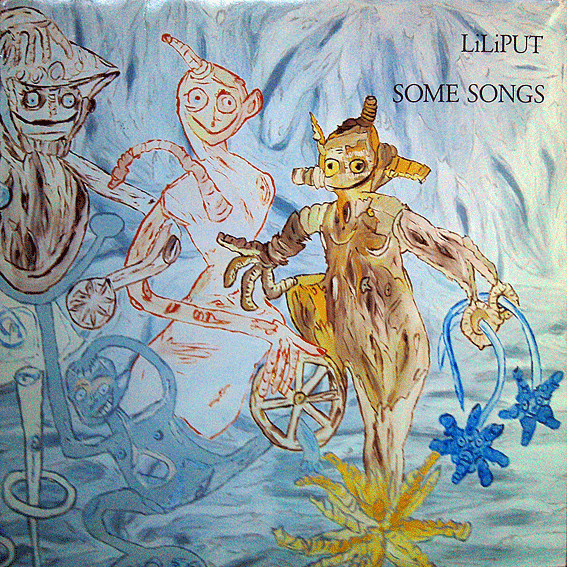
Liliput – Boat-Song
Originally released on the album ‘Some Songs’ (Rough Trade Deutschland RTD 15). Written by Marlene Marder, Klaudia Schiff and Astrid Spirit. Publishing: Copyright Control (SUISA). Recorded at Platinum, Oberehrendingen. Engineered by Harry Zindel.. P 1983 Rough Trade. Licensed courtesy of Kill Rock Stars
Klaudia Schiff: Vocals, Bass, Accordion
Astrid Spirit: Vocals, Violin, Bass, Percussion
Susanne Müller: Saxophone
Marlene Marder: Electric Guitar, Acoustic Guitar
Julia Müller: Piano
Beat Schlatter: Drums
Klaus “Major” Heuser: Congas
The first release on the then newly-founded Rough Trade Germany label was the single ‘You Did It’ b/w ‘The Jatz’ by Liliput in March 1983. In June, nine new songs were recorded at the Platinum studio in Oberehrendingen, Aargau, with the support of several guest musicians. These tracks were then released in early October of that year as the final album by Liliput, simply called Some Songs. Also, on Wednesday October 5th, 1983, they played their last live show at the Club Mascotte in Zürich (no record release party!).
Michael Lütscher, an editor of the music magazine Cut (one of the best of its kind in those days) went to the Mascotte and was invited to conduct an extensive interview by the three Liliput musicians, shortly after their concert. He wrote about this conversation and the show in the Cut Christmas edition in 1983 as part of the record review for Some Songs:
“It seems to me that the women of Liliput are, first and foremost, committed to themselves. Half a dozen years of making music, changing the manner of expression but never putting aside the connection to their own situation; there is a creed for independent work evident here. Some Songs, the present album is bespoke: from Liliput for Lilliput. The delicate songs very much match the appearance of Klaudia Schiff, Astrid Spirit and – perhaps to a lesser extent – Marlene Marder.
“Prior to seeing the band live in Zurich’s Mascotte a good month ago, I had the feeling that this formation (including Beat Schlatter on drums) had come to an end. The typical originality of Liliput since their first LP (released in spring ’82), based on brittle arrangements without a melody, was lost through repetition; i.e. the joke becomes an empty phrase that only serves for self-purpose. That is why the occasional recordings of piano, saxophone and accordion did a power of good on the new LP. At the same time, the arrangements have generally become softer. Songs like ‘Blue Is All In Rush’ or ‘Étoile’ are real catchy tunes, very fine songs without excess baggage. To me, lyrics that combine dreams and realistic experiences also seem to be an obvious expression of their own actions and thoughts.
“For the future, Liliput will continue as a different formation and, in doing so, it is about integrating and joining their other interests (besides just the music). The risk that this will simply result in an art performance seems quite unlikely to me, despite the band’s partial closeness to the art scene, because Liliput have so far never really remained stuck on just one form in their work. The lyric “The only thing to do is simply continue” featured in the song ‘Your’s Is Mine’ could also actually be the band’s self-understanding.”
© 2020 Lurker Grand / © 1983 Michael Lütscher / kleenexliliput.bandcamp.com
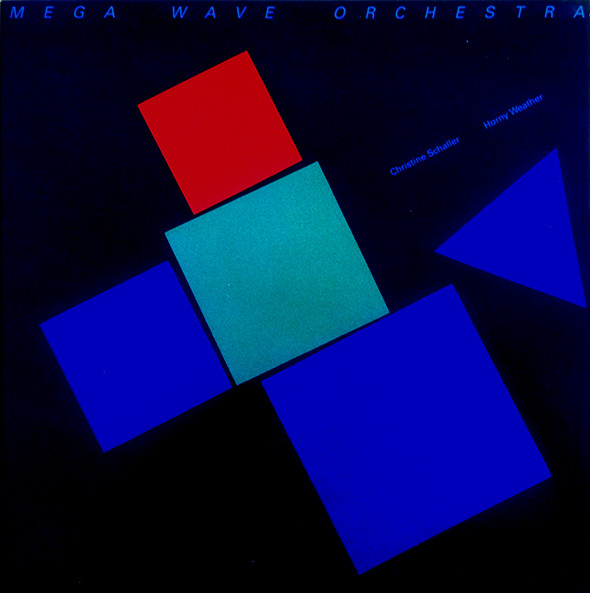
UnknownmiX – Nightmare
Originally released on the cassette ‘UnknownmiX’ (self-released). Written by UnknownmiX. Publishing: Copyright Control (SUISA). Mixed by Hairi Vogel. P 1983 UnknownmiX. Licensed courtesy of Magda Vogel
Magda Vogel: Vocals
Dan Mareen, Markus Eichenberger: Saxophones
Ernst Thoma: Synthesizer
Knut Remond: Drums
Those who cannot remember the past are condemned to repeat it
UnknownmiX was founded in Zurich in 1983 and existed for a little over a decade. The original formation consisted of the singer Magda Vogel, drummer Knut Remond, composer and electronics technician Ernst Thoma and typographer Hans-Rudolf Lutz, who was also a full member of the band. Throughout the years there have also been guest musicians invited for vinyl and CD recordings. Sadly, Hans-Rudolf Lutz and Ernst Thoma passed away in 1998 and 2020 respectively but the other former members are still musically active to this day.
Knut Remond was then replaced by Mani Neumeier from Guru Guru on drums from 1988 onwards and, parallel to UnknownmiX, he was also a member of the 16/17 project in Basel until 1994. Ernst Thoma left the band in 1990, whereupon Juliana Müller took over the compositions and electronic parts. Her touch is clearly recognisable and audible on the last CD release DominaDea, where the song ‘Nightmare’, written and recorded in 1990, can be found.
UnknownmiX managed itself and was mainly a live band, playing some 400 to 500 shows. These concerts took place at the renowned jazz festivals in Willisau or Montreux, but also in small youth centres somewhere in the countryside or at colleges in Switzerland and abroad.
All of their recordings, cassettes, 7″ and 12″ singles, LPs and CDs, were released on their own UX Records label and the like-minded folks at RecRec took over the distribution. Responsible for the visual appearance of all their releases (outer and inner sleeves), posters, as well as for the live performances was Hans-Rudolf Lutz. As a visual DJ, he worked with up to 10 slide projectors simultaneously and immersed the entire room, the audience, the stage and the musicians in such a way that it became a four-dimensional sculpture. Consequently, UnknownmiX wanted to push boundaries and explore extremes, both in music, singing and visuals.
For many reasons the story of UnknownmiX is considerably impressive and continues to have an impact until today. Since their disbanding in 1992, subsequent generations have always been interested in one or another aspect. The band never vanished into oblivion because their oeuvre was incredibly innovative, musically and visually. Their musical performance moved between familiar and distorted, was radical, not always easy and was sometimes ahead of its time.
Magda Vogel: “My work as a songwriter for UnknownmiX always began when I received the basic tracks for a new song from Ernst Thoma and, likewise later, from Juliana Müller. I let myself be inspired by the music, the atmosphere and the moods that the tracks elicited to create the text content and the vocals based on the existing musical structures, breaks, and other guides such as harmonies, rhythm and sounds.
“When I heard the basic track for ‘Nightmare’ the first time, the quote “Those who cannot remember the past are condemned to repeat it” by philosopher and writer George Santayana, came to mind and I tried to fill the song with that content. It means that one has to face the past in order not to repeat it over and over again. The song does after all sound like the musical translation of a nightmare and the shimmering, tense, threatening fill-ins such as slamming doors and screams, the hyper rhythm and the film soundtrack-like sound collages reminded me of a ghost story, a mental roller coaster ride, an apocalyptic and slightly crazy scene. That’s how the two short stories came about. When I listen to the song today, the threat of the current situation seems to shimmer through.”
© 2020 Magda Vogel, Lurker Grand
Elephant Château – Wir Fangen Mit Arbeit An
Originally released on the album ‘Offshore Drilling’ (Because Of You BOY 010). Written by Marlene McCarty. Published by RecRec Music. Recorded at C. Vetsch studio. Mixed at Elephant Château studio. P 1990 BOY. Licensed courtesy of Bureau B
Johannes Vetsch: Bass
Cornelia Melián: Clarinet
Christian Shaffner: Percussion
Max Spielmann: Synthesizer
Marlene McCarthy: Vocals
In 1982, Max Spielmann and Johannes Vetsch shared a larger apartment building with a few other friends in Basel. Their soon-to-be band member Christian Schaffner had a friend in this house and Johannes did some jams with him. He then met Marlene McCarthy in his graphic design class. They became friends while talking about music and they bonded over their sympathy for Captain Beefheart. Musically, Max came from a slightly different place – somewhere between the Art Ensemble Of Chicago, Talking Heads and Fehlfarben.
He started playing with a Casio Vl-1, the synthesizer the German new wave group Trio famously used to create its hit tune ‘Da Da Da’. Johannes played saxophone and bass, then Max brought the Roland TR-606 Drumatix and the first analogue synthesizer, a Roland Juno 60 in to the mix. He was magically drawn to the buttons on electronic music devices and the wrongly supposed simplicity of playing rhythm guitar.
Max was the biggest amateur in the band. He only later learned about harmonics, circles of fifths and blues structures. And it’s true that with every step of professionalisation also comes a degree of deterioration because it restricts the freedom and the search for uniquely creative solutions. Then Christian Schaffner joined as a guitarist and drummer. Another member was Cornelia Meliàn. She studied at the Schola Cantorum in Basel and was a very good multi-instrumentalist, with a lot of stage experience and strong classical roots. Later Franziska Strebel joined. She became the drummer and percussionist.
The band had to prepare several tracks for a performance at the release event of a small book written and published by Marlene McCarthy, called “news for: or UFOs visit the palace”. It was a collection of poems and thought pieces. They were literally forced to finish all the songs in time given the fixed date. And that’s how it always was with Elephant Château, from the inception to the end.
Then, they played their first show in the fall of 1984 at the Totentanz club in Basel. The performance was a mixture of a concert and a lecture in front of an art school audience. Everyone seemed to like it and that encouraged them to continue. The attendees thought of the music as strange and experimental. The musicians found that quite appealing!
After that they became something like a band, with the aspiration to record credible intellectual rock music with the ‘Dreamings’ 12” in 1985 and ‘Offshore Drilling’ LP/CD in 1990. They exploited the sound spectrum of the 1980s, from analogue synthesizers and rhythm machines to samplers and digital effects units, without technological coldness, but full of emotion, melancholy, and non-academic joy for experimentation. Every song they recorded was like a new continent. They always assembled their pieces differently, building around a drum or sound pattern, a word, a riff, or a fragment of a melody. They were curious about new rhythmic and tonal possibilities that they could explore through electronics. Of course, working with mistakes was part of the game. Elephant Château was not really fluent in so-called “pop music”. That’s one reason why each song sounds quite unique and of a kind that could no longer be done today.
For the analogue song ‘Wir Fangen Mit Arbeit An’, Marlene starts to rap in her faulty German monologue: “It’s like an illegal anti-Freudian love affair, or am I too romantic?” while accompanied by a sensual crackling sound. This song is about a trip Marlene took to Liestal near Basel, where her boyfriend was waiting. She sits on a suburban train and reflects about being an alien in her broken German. But, it was essentially a love poem about Marlene’s relationship, love and working under duress.
Right at the train station in Liestal was also the Palazzo, a concert venue with an art exhibition room, a cinema and a theatre. This was the place where all the punk and new wave gigs took place before the Totentanz opened in Basel. For many of these concerts, Marlene created elaborately painted decorative works.
© 2020 Interview with Max Spielmann and Johannes Vetsch by Bjørn Schaeffner, edited by Lurker Grand
Mittageisen – Anfang
Originally released on the album ‘Mittageisen‘ (Luna-MB-Musik LUNA MB 8303). Written and Produced by Bruno Waser. Publishing: Copyright Control (SUISA). Recorded at Sunrise Studio, Kirchberg. ℗ 1983 Luna-MB-Musik. Licensed courtesy of Luna-MB-Musik
Bruno W.: Synthesizer, Strings, Drum Programming, Voice
Back to the musical future, beginning at the end of the 1970s in cities like London, Manchester, Sheffield and Berlin. The “front line” of the cold war runs straight through Berlin. The buildings on both sides of the wall are in weathered brown-grey, except for the area around the Ku’damm and Berlin Mitte. In the western part of the city, neon signs illuminate the night, while in the east the grey layer is even thicker, mostly due to the lack of financial support from the Allies.
These desolate facades of the two systems, together with the special political status and geographical location, form a dystopian backdrop. The ideal location for a virtual film, with ‘Anfang’ (Beginning) being the soundtrack for the opening sequence, showing the protagonist on his way to a concert at SO36 in Kreuzberg.
Bruno W., initiator of Mittageisen, visited Berlin for a few weeks in 1980. In particular, the impressions from the districts East and West of the Wall, generally not intended for visitors, influenced the texts and music of Mittageisen. Nine of the songs were written during this time, then recorded in Switzerland in the autumn of 1982 and released as an LP in early 1983.
The name Mittageisen is based on a photomontage done by John Heartfield (1891-1968) titled Hurrah, die Butter ist alle! (Hurrah, There’s No Butter Left!). It shows an obviously Nazi-minded family sitting at a table eating various objects made of metal. The trigger was a sentence from a speech by Hermann Göring: “Ore [iron] has always made an empire strong, butter and lard have at most made a people fat.” This Heartfield collage was originally used for the front page of the Arbeiter-Illustrierte-Zeitung (The Workers Pictorial Newspaper) published on December 19th, 1935. It was also the inspiration for the single ‘Mittageisen’ (Metal Postcard) by Siouxsie And The Banshees in 1979.
Mittageisen developed a uniquely individual music style using an analog synthesizer (Korg MS-20), coupled with a drum machine (Roland CR-78 and TR-808) and bass amplifier, as well as guitars and bass played by Daniel S. and Markus S.
In 1983, the self-titled Mittageisen LP was named “Record of the Week” in Sounds!, a Swiss national radio program that to date specialises in promoting new music. In addition, Mittageisen songs from the album were played by radio stations in Germany, Netherlands and Japan. Because of all this airplay, their popularity increased tremendously and also cemented their reputation as being in the vanguard of German-speaking dark wave bands.
By January 1985, the musicians as well as the musical focus had changed and Mittageisen released a 12″ maxi single with the songs ‘Automaten’ and ‘Neues China’. A highly danceable release, ‘Automaten’ again became “Record of the Week” with various radio stations and music magazines. The record also found its way on to the John Peel show on BBC Radio 1 and became an indie disco hit in the UK and other countries. After some concerts (including with Liliput, The Vyllies and Propaganda) and some last demo recordings, the final formation of Mittageisen eventually split in 1986.
© 2020 Bruno Waser
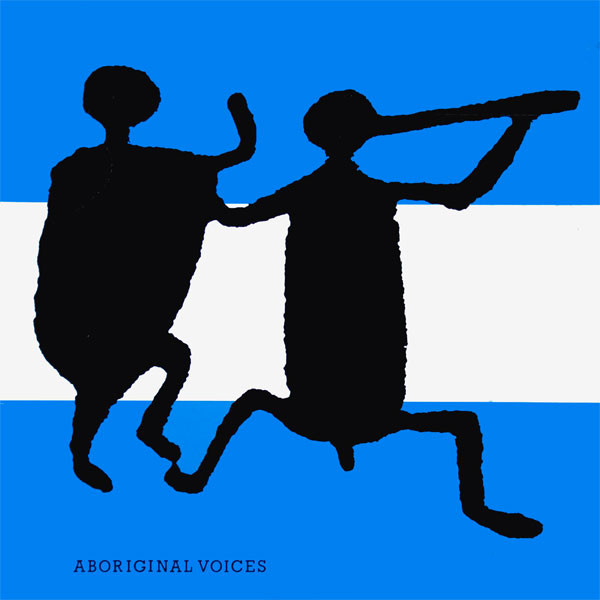
Aboriginal Voices – Le Jour L’Ennui
Originally released on the EP ‘Aboriginal Voices’ (R.F. Records RF 1004). Written and Produced by Heinrich Zwahlen and Micheline Pfister. Publishing: Copyright Control (SUISA). P 1982 R.F. Records. Licensed courtesy of Heinrich Zwahlen and Micheline Pfister
Heinrich “Wüste” Zwahlen: Guitar, E-Drums
Micheline Pfister: Vocals, Synthesizer
Electro minimalism with a French twist by otherwise native Swiss-German speakers
Heinrich Zwahlen, known as Wüste (Desert), was a former grammar school student with jazz experience. Beginning in 1977, he played guitar for Nasal Boys, the first Swiss punk band, who renamed themselves as Expo in 1978 and, ultimately, disbanded in Autumn 1979. Micheline Pfister, referred to as Misch, also a grammar school pupil, had previously worked as a singer with Troppo, the first Swiss wave band. Together, they founded Aboriginal Voices or AV as they were called in early 1980.
They were a couple and fed up with band constellations but had a lot of ideas and new instruments. The approach to Aboriginal Voices was free of any academic intellectuality. In other words, it was spontaneous and with a large dose of naivety and humour. Neither of them were tech nerds. Thus, their handling of new electronic devices was supposed to happen in a playful manner and through this approach a distinct new form of electro-pop would emerge.
It was hard work until the first songs finally took shape. Wüste was mostly in charge of composing, playing the e-drum and guitar, while Misch handled programming and working the keyboard. For vocals, they initially brought in Magda Vogel who later made an impact with her own band UnknownmiX. In Autumn 1981, Aboriginal Voices then released their first demo, a tape with four very minimal songs, both rhythmically and structurally.
However, the huge challenge was to present their music as a live act, without having to compromise. At that time, a great many acts wouldn’t or couldn’t perform live using synthesizers or sequencing. They simply played pre-recorded tapes for playback purposes instead. Thus, it was essential to keep an oversight and control on all the devices while, at the same time, ensuring that you could sing and play. Furthermore, Aboriginal Voices wanted to be in charge of mixing themselves! Keeping in mind that, without your own dedicated mixer and PA, your sound is at the mercy of a venue’s crew who, more often than not, have no clue what the artist actually should sound like.
Nonetheless, as of Spring 1982, Aboriginal Voices started with their first live concerts and no compromises were required. It included shows together with Malaria! from Berlin and the Honeymoon Killers from Belgium. Wüste recounts those early days: “Well, AV truly performed everything electronically when playing live and it also included a programmed light show; something that’s done by everyone nowadays. The whole repertoire was designed for live performances given that my past background was with a band as opposed to a studio. I guess therein actually lies also the pioneering achievement of Aboriginal Voices.”
A further tape with six new songs was released in May 1982 and titled Instant Music. The opening track was ‘Le Jour’. It was, according to Wüste, “Electro minimalism with a French twist by otherwise native Swiss-German speakers. Using French was the perfect way to make it rhyme for a blasé post-punk statement about being listless and bored (l’ennui) in the daytime, while having desires and cravings (envie) only during the night.”
© 2020 Lurker Grand, Heinrich Zwahlen
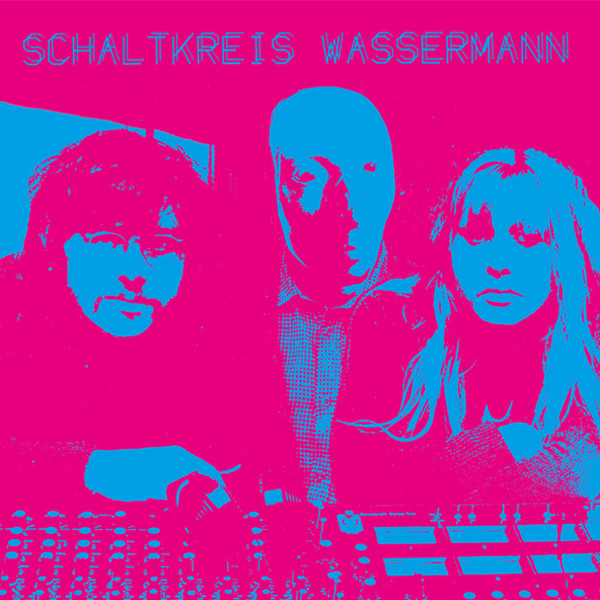
Schaltkreis Wassermann – Arabesque
Originally released on the compilation ‘SKW’ (Private Records / Space- Records SR-82102). Written and Produced by P.J. Wassermann and Stella Wassermann. Publishing: Copyright Control (SUISA). P 2016 Space-Records. Licensed courtesy of P.J. Wassermann
P.J. Wassermann: ARP 2600, ARP Avatar, Roland 100M, Sequential Circuits Prophet V, Roland Space Echo
Stella Wassermann: Vocals, ARP 2600
The late return of Schaltkreis Wassermann…
Switzerland has Bruno Spoerri, a pioneer of electronic music and had a chemist called Albert Hofmann († 2008) who, in 1943, discovered the hallucinogenic effects of LSD. For a time, they were both active in Basel. It is the same town where, from 1979, Stella & P.J. Wassermann started to experiment with electronic music and LSD as Schaltkreis Wassermann. Of course, they also got to know the aforementioned two men personally. In 1981, they also founded their Space-Sound-Studio and for many years electronic music was the centre of their lives.
Each synthesizer consisted of a number of circuits (Schaltkreis) that, when connected together, combined to form a larger, more complex circuit. Back then, they connected innumerable such circuits at their studio to form a comprehensive system – leading to Schaltkreis Wassermann. The name segment Schaltkreis was also inspired by Timothy Leary and his book The Game of Life. Schaltkreis Wassermann ultimately became the best known of all their several artistic projects from the beginning of the 1980s. And, nowadays they are regarded as one of the pioneering electronic groups of the initial ‘80s post-punk era.
In Italy, their music was very popular in the Cosmic scene, but they actually knew nothing about it at the time and also saw no money from it. Similarly, in England their only album Psychotron, released in 1981, was placed at number 7 in Melody Maker’s synthesiser chart but yet again no income was generated despite this recognition.
The Schaltkreis Wassermann project was therefore put on hold after a few years and, thereafter, they mostly composed and produced commercial jingles, film and video soundtracks alongside songs for their follow-up act, the Matterhorn Project.
In 2012, the Belgian label Private Records began re-releasing Schaltkreis Wassermann on vinyl, beginning with the first single ‘Sex Is Out’ and their album Psychotron. This was followed up in 2016 with the double album SKW that comprised unpublished songs that didn’t make it on to the original Psychotronalbum. One of these additional tracks was ‘Arabesque’.
PJ recalls: “’Arabesque’ was created around 1981, on the one hand out of my interest in oriental scales and on the other from playing around with the ARP 2600 synthesizer and the associated 16-step sequencer. The latter allowed me to feed very fast and random variations into the tone of the melody voice, resulting in the characteristic sound. The second lead sound was then recorded with the guitar-synthesizer ARP Avatar. However, we didn’t release the song because I wasn’t satisfied with the quality of our 4-track TEAC tape recorder.”
Schaltkreis Wassermann had a minimalistic approach that was also dictated by the available means at the time, including the ARP 2600, ARP Avatar (Guitar), Roland 100M (Modular) and the Sequential Circuits Prophet-5 synthesizers. All were kept in time together by the Roland Micro Composer MC4, capable of playing four monophonic synthesizers simultaneously. The tape recordings were done with a 4-track TEAC and later an Otari 8-track machine.
© 2020 PJ Wassermann, Lurker Grand: www.schaltkreiswassermann.com
Schamanen Circel – Arbeiter
Originally released on the mini-album ’Ocвoбoждeниe’ (Recording Union 1984-1). Written by Huldrych, Graf J. Von Stollenwerk and Andy NEP. Published by Third Mind. Produced by Schamanen Circel. Recorded at Pyramids Studios, Küsnacht. P 1984 Recording Union. Licensed courtesy of Huldrych
Graf J. Von Stollenwerk: Saxophone, Vocals
Huldrych: Bass
Andy NEP: Drums
Susi: Violin
Ernest: Congas
Featuring Flix (Norton)
Der Arbeiter (The Worker), Der Träumer (The Dreamer)
The Swiss Punk Now Festival in Emmen, Lucerne, took place at the beginning of November 1979. During these two days, it became apparent that punk rock had moved on from its original form and had worn itself out somewhat; both the music and the substance alike. At the end of that month, Huldrych also attended a concert in Zürich by a completely unknown band (hailing from England and Switzerland) called The Pop Rivets and this show then became the inspiration for him and three other friends to start their own band called Mono.
It was at the same time that a revolt was looming. And, on May 30th, 1980, a violent opera house riot in Zürich initiated a youth-led “movement” (D Bewegig) that would keep many Swiss cities and the country on their toes for years to come. One of the key demands by disenfranchised young people was for self-governed places and Huldrych was personally involved in this pursuit. Consequently, Mono belonged to the generation of movement punk bands that were active in the early 1980s.
He also co-organised the first Ton Modern Festival at the Rote Fabrik (autonomous youth centre in Zurich) on January 30th, 1981. It was a festival that went on for several days and there where many national and international acts showcasing new and cutting-edge musical trends. The punk bands had their own evening with the slogan “von uns für uns” (by us, for us). Mono ended up playing there for the last time, using the moniker Lieber Tod Als Mono (preferably dead than Mono).
Ultimately, the violent year-long struggle against the state, epitomised through the slogan “Züri brännt” (Zürich is burning), took its toll on the musicians of Mono and many other protagonists that were actively engaged at the time. The Mono practice room was therefore rarely in use and the music scene in Zürich began flourishing with countless musical projects that heavily embraced (mostly British) post-punk developments. Socio-politically conscious music was pretty much out. Yet Huldrych, having played bass for Mono, wanted to continue making distinct and independent music.
The search for comrades-in-arms proved to be cumbersome, for there was a great void. He found a kindred spirit in Andy, who played the drums for the first time, but together at least the rhythm section was established. A singer and/or guitarist were still in demand. Then Martin (aka Graf J. Von Stollenwerk)came along and he was a bit more experienced on the saxophone. Despite many other musicians auditioning for countless sessions, only the three-piece formation remained in place and Schamanen Circel was founded.
Musically, they didn’t follow any defined style. They simply tried out different things and were not limited to any preconceived guidelines. After all, bass, drums, and saxophone weren’t really what would be considered a classic band formation. They then recorded the song ‘Arbeiter’ together with ‘Träumer’ at the Pyramid Studio, Küsnacht. The two studio owners, Flix and Jürg, helped out and guest appearances included Susi on the violin, Ernest on Congas, and Flix’s Norton.
‘Arbeiter’ is a song that addresses a relatively simple topic. For, in Switzerland, work is considered to be the most important thing in people’s lives. But back then, there was talk about worker robots for the first time and nobody could actually imagine how this would manifest itself in the future. At the same time, the three musicians of Schamanen Circel didn’t pursue any regular work. The notion of full independence for their own lives fascinated them. They sought freedom in every sense: creativity, challenging the norm and not giving in to those compromises that grip you in a vice and steer everyone in the same direction, like ants.
Today, 40 years after the tumultuous early 1980s, Huldrych runs the self-catering farm Podere Il Casale in Tuscany, Italy. Together with his family (five sons) he became a worker, dreamer and now also a grandfather, all in one.
© 2020 Lurker Grand, Huldrych
Die Welttraumforscher – Mondfolklore
Originally released on the compilation ‘Die Singende Sternlaterne’ / ‘Folklore Des Weltalls 1982’ (Planam WTF2 / A Tree In A Field Records TREE046). Written and Produced by Christian Pfluger. Publishing: Copyright Control (SUISA). P 2013 Planam / A Tree In A Field Records. Licensed courtesy of Christian Pflluger
Christian Pfluger: all instruments
Die Welttraumforscher (The Space Explorers) is one of Switzerland’s most enigmatic musical projects, with a catalogue that not only spans more than 30 albums, but also films, stories and countless illustrations. These documents are the only proof that Die Welttraumforscher actually exist. Small creatures with big, gentle eyes, more reminiscent of friendly ghosts than of scientists (Forscher), are depicted with childlike innocence and painstaking attention to detail. Their universe also includes such characters as the Moon Pope, Kip Eulenmeister and Leguan Rätselmann. Together, they experience weird adventures with a touch of science fiction, metaphysics and Dadaism.
As Die Welttraumforscher themselves put it, “We are working for the next world. No wonder that those of us that are stuck in the here and now are not always able to make sense of it.” The man behind this phantom band is only mentioned in the small print: “Lyrics, music and illustrations by Christian Pfluger for Die Welttraumforscher”.
They began to explore the folklore of our solar system at an early age and delivered their first results with songs of Uranus, Neptune and the Moon – like the piece ‘Mondfolklore’ (Moon Folklore) from 1982. It became a recorded excursion to the, unfortunately, still unexplored music of the Moon, using minimalist means (one electric guitar with volume pedal, one Roland mini amplifier with reverb, two pieces of metal parts, psaltery) and captured on a 2-track tape in the living room at home. The future will show whether we can one day count on the complete planetary folklore catalogue from the explorers.
However, instead of concealing or disguising himself at shows, he just very rarely plays live at all. This veil of mystery, the borderline-esoteric mysticism, plus the fact that the lyrics are almost exclusively in German, might explain, to some degree, why Die Welttraumforscher have always led a niche existence.
© 2020 Christian Pfluger: www.atreeinafieldrecords.com
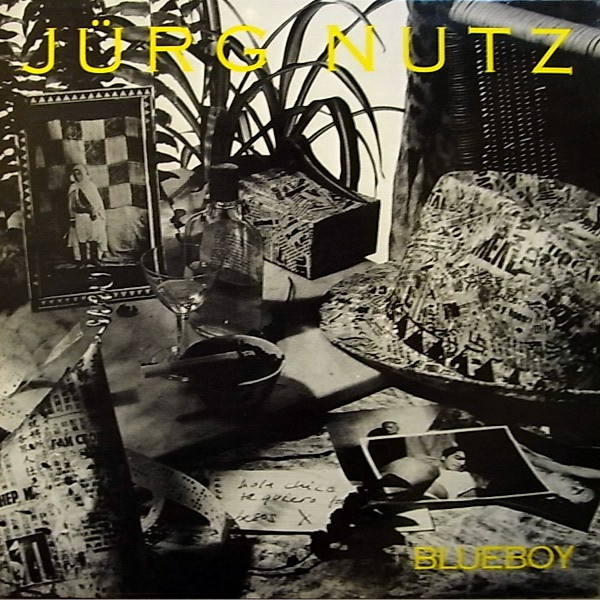
Jürg Nutz – Labyrinth
Originally released on the album ‘Blueboy’ (Because Of You BOY 004). Written by Jürg Nutz. Published by RecRec Music. Produced by Jürg Nutz and Veit F. Stauffer. Home recording on 4-track machine. P 1989 BOY (Because of You). Licensed courtesy of Jürg Nutz
Jürg Nutz: all instruments
How it came to be, how it is… now
1980: Rolf Weber made films. Short films. He was also very excited by music and he was enthusiastic about Jah Wobble and Yello. There was talk about how great it would be to make his own record.
1980 late Summer: I continued to pursue this idea further, when my friend Ruedi and I went to New York for three months. At Alexander’s department store, I bought the Bee Gees ‘Rhythm Machine’ children’s synthesizer by Mattel that was equipped with a small keyboard and four beat patterns and I tried making music myself.
1981 early Summer: A year later, we went to New York again. I discovered in the Village Voice weekly newspaper a report about one of the very first 4-track cassette recorders that the company TEAK had just brought out, at a cost of $324 Dollars. I had to have it. I bought a big suitcase and I smuggled the device back to Switzerland.
1981 Summer: I started to set up a recording studio in our large enough loft in Zürich. Erika Eberhard (Evita) offered me her PA for 2,000 Francs and Lislot Ha, the former drummer of Kleenex, gave me her white bass that had a warped neck. I then clamped the bass to the table using a vice and played it like a zither. Soon thereafter I actually managed to record a sound, yet with great difficulty.
In the film Satyricon by Fellini, there is a scene where a Minotaur in a labyrinth challenges one of the main characters, the blonde one, to an uneven fight. I remembered that at the top of the huge clay trench there was a frenzied crowd chanting something like “eja sassa, eja sassa” in order to spur on the two opponents. I repeated this in my song as a recurring pattern, while I sang the four stanzas, then three, employing phonetic English.
1983 Spring: Time flew by. I expanded my repertoire and issued a limited number of tapes. As a result, Patrick Frey presented my music in his afternoon program on Radio Lora, while Isolde, a film operator at the Nord Süd cinema, also played ‘Labyrinth’ and others during movie breaks. This greatly pleased me.
The idea of making music the way I imagined was definitely influenced by my two years of studies at the independent art school F+F in Zürich; where I created music without knowing any notation, without being able to play an instrument beforehand. That was it. My contact with Veit from RecRec (record shop and label in Zürich) and the support from Ruedi were also crucial.
During another phase of being in love, the a cappella songs ‘I Loved This Ma’, ‘Take Care’, ‘Troubles’, ‘Blue Boy Magazine’, ‘Meantime’, and ‘He’s A Diva’ came to be, which I dedicated to Remo Tizziani at the Gasometer (restaurant in Zürich). These were done without technology, no loops, simply through the use of the voice.
1989 Spring: Veit announced the recording of an album that then was postponed several times. It eventually took place on January 31st at the Dynamo Studio in Zürich and was mixed by Jürg Planta.
1989 February 25th: The record release party on a Saturday at the Rote Fabrik, Zürich. Friends and acquaintances, ex-students of the F+F school, my brother, and so on, all came. For sure around six hundred people in all who then convened in the Shedhalle. I was quite nervous.
2020 Spring: The complete version of events is now available in German: vimeo.com/416106236 as well as the video for the song ‘Labyrinth’: vimeo.com/409905316
© 2020 Jürg Nutz, abridged version
KonX – …Basic Ground Without Voice… (Mehmet Aslan Edit)
Originally released on the album ‘Demos’ (KNSE International LP-09831).
Written and Produced by Peter Felippi. Publishing: Copyright Control (SUISA).Recorded at the Electronic Music Multitrack studio, Gempen, Switzerland, Summer 1983. P 1983 KNSE International. Licensed courtesy of Ewa Felippi
Peter Felippi, 1953 – 2016…
The EMM studio in Basel was founded in 1979 by Peter Felippi, an audio and video technician and a musician himself. The abbreviation “EMM” came from the original name “Electronic Music Multitrack” and resulted from the principal idea of operating a recording studio specifically set up for electronic music, combined with multi-channel sound recording technology.
The desire for his own studio was rooted in Peter’s occupation as a musician. In his youth he was already interested in rock and pop music as well as electronic media, leading him and a friend to build their first mixing desk while they were still in high school. Next to his technical activities, Peter also worked in recording studios and for music productions; either as a studio musician (keyboard and vocals) or realising his own ideas.
Essential for a production back then was to have your own independent distribution for the recorded music. In 1980, Peter therefore founded the KNSE Company and KNSE Media Verlag und Vertrieb, using a four-letter abbreviation of his stage name, Phil KnoX (KN) and that of his musical partner at the time, Silvio Panosetti (SE). These companies were for his own music as well as third-party studio productions that, due to a lack of funds or rejection by major distributors because of so-called “weak commercial appeal”, otherwise wouldn’t have had an opportunity for a release.
Peter then worked for two years on his album Blue Light (1982) that was put out by Telefunken, a long-established giant in the German music industry. Following that he then engaged in another project with the abbreviation KonX, switching the ‘n’ and the ‘o’ from KnoX. The idea was to periodically release albums but each time with different musical content and partners. The start was made in 1983 with the album KonX Demos. It was an entirely electronic production, where even the vocals were recorded and synthesized. Sound-defining elements were created using the newest keyboards that were available at the time. According to Peter, it is an album that came to be from the joy of music and the title actually refers to the overall concept of the record.
For one, it’s a “demonstration” of the almost limitless possibilities regarding digital and electronic musical instruments. On the other hand, the execution of each song retains the characteristic of a demo; similar to sketches in visual art. He therefore deliberately did not finalise the songs to perfection. This is also evident in the fragmentary scraps of text that were used in a highly associative manner reminiscent of the pilot vocals in music recordings. Another novel idea was to place a repeating run-off groove at the end of the record so that when the needle moves to the centre, the music actually plays on in the form of an endless loop that never falls silent. The song selected for this compilation ‘…Basic Ground Without Voice…’ can be found on the B-side of the album and, as the title already suggests, it is an instrumental piece without vocals.
Peter wanted to expand the KonX project further by moving into visual areas, seeking a fusion of sounds and images. This never came to be. Instead there was a second KonX album two years later, called It’s A Gun. Over time, his company the EMM recording studio in Gempen, the EMM Ton und Video studio in Basel and the EMM Medienkommunikation AG grew larger and larger. In addition, all of the perpetual technological advancements meant that these needed to be thoroughly explored and applied accordingly. In other words, there was always time required for new or other projects and, although KonX never continued, Peter kept on working as a musician for all of his life.
© 2020 Ewa Felippi, Lurker Grand
Bells Of Kyoto – Asho II
Originally released on the album ‘Bells Of Kyoto’ (RR Records 300 184). Written by Peter Waters and Ollie Marland. Publishing: Copyright Control (SUISA). Produced by Bells Of Kyoto, Laurie Carls and Ollie Marland. P 1984 RR Records. Licensed courtesy of RR Records
Ollie Marland: Synthesizer, Guitar, Percussion
Peter Waters: Piano, Bells
Peter Drefahl: Electric Bass
Alex Friedrich: Drums
Bells of the Middle East…
In a real sense, Bells Of Kyoto was already born in 1974, when the Australian pianist, Peter Waters, had the abundant good fortune to rent a superb flat in Islington, London, also inhabited by the ingenious Ollie Marland, who was in his early teens back then. A pianist with an incredible talent, Ollie switched to impressive guitar playing in order to team up with Peter in the jazz-funk ensemble Jamjah, performing in venues around London.
In 1977, Peter and his wife Juliet moved to Constance, Germany, and in 1978 to Switzerland. But, even in their new Swiss domicile, they never lost contact with the city and local music scene of Constance, where Bells Of Kyoto would later originate. Rail Studios in Constance was a particularly rewarding meeting point for creative minds from Southern Germany and Eastern Switzerland, including Lawrence Carls, an excellent pianist, Alex Friedrich, a drummer, Peter Drefahl, a bass guitarist and Volker Zöbelin, who all had varied musical activities at the time and who also were the Rail Studio co-founders and collaborators. Given this amazing constellation, Ollie Marland was then invited to travel from London so he could “colour” Peter Waters’ acoustic compositions with his inimitable and imaginative electric keyboard and synthesizer sounds. Bells Of Kyoto was born.
In 1984 an album was recorded, produced, and released all in the same year. Some of the songs, like ‘Temple’ and ‘Swiss Air’, are designed as Zen meditations for sitting at the beautiful Bodensee (Lake Constance). Other works on the Bells Of Kyoto album have a strong dose of high jazz-rock energy. Then again, Asho I and Asho II look less toward the ancient Japanese capital of Kyoto for their basic musical instincts but rather towards the Middle East. In the case of Asho II, it was created as a Middle Eastern bass riff that, thanks to the masterful magic hands of Ollie in collaboration with Lawrence Carls, became a virtual studio audio-construction of live mosques and market-places that could be anywhere in Egypt, Iran, Iraq, or Turkey. Consequently, Bells Of Kyoto unified many worlds, resulting in a veritable reservoir of world music.
The band also performed live shows for nearly ten years with various formations. Their stage appearances included a concert every year at the Grabenhalle, St. Gallen, the Gems at Rielasingen-Worblingen, next to Singen in Germany, and various venues in Constance. However, they played these gigs without Ollie Marland since his career had taken off back in London; for two decades he became the musical director for Tina Turner. Yet, he did join Bells Of Kyoto in 1986 for one special concert in Leverkusen, Germany; presumably the most outstanding of all the live shows that they played.
Peter’s own creativity in composing, arranging, and capturing the spirituality of Bells Of Kyoto also found a climax around 1998-1999 in form of The Treya Quartet, formed together with Paolo Fresu, Tony Overwater and Gilbert Paeffgen. Again, just one album was produced by this group but, on the heels of that release, some 100 concerts followed, including performances at countless festivals, where the Treya Quartet plays Gabriel Fauré was showcased. Hence, given the overall breadth and often exotic nature of their musical oeuvre, one could safely make a case that the music of The Treya Quartet might actually be considered as the reincarnation of Bells Of Kyoto.
© 2020 Peter Waters
Dr. Chattanooga & The Navarones – Kabyl Marabù
Originally released on the compilation ‘Ticino Musica Vol. 3’ (Gea Records GEA 10003). Written by Franco Ghielmetti. Publishing: Copyright Control (SUISA). P 1983 Gea Records. Licensed courtesy of Franco Ghielmetti
Marcel “Sugar” Francobaldi: Rhythm Guitar
J. de Bratislava: Boogie Guitar
Hector Muñoz: Vocals, Percussion
Mr. Livingstone: Tumba, Percussion, Exotic Bird Sounds
Dos monkeys speak in me!
There are bands that were meant to change the history of rock ‘n’ roll. And there are others who could have done so. That is … if everything had gone perfectly for them. It is not a minor issue.
“With your elbows resting on the bar,” everything seems to be possible. Even putting a band together that doesn’t know how to make music and without instruments. But that’s exactly how Dr. Chattanooga & The Navarones was founded on Christmas Eve, 1980, in the Pace bar in Chiasso. At the time, the music scene in the Ticino (Italian-speaking part of Switzerland) was like Kaurismäkis’ Finland, before the Leningrad Cowboys.
Their first appearance could have been called “The Smallest Rock ‘n’ Roll Swindle”. Promoters were looking for bands who wanted to play as the opening act for Flame Dream (then a famous Swiss rock band) in Locarno, on the Piazza Grande. The Navarones sent them glamour photographs with snappy song titles. Apparently, that was enough because their demo tape never reached the destination. The procession of Jesus Christ Superstars and the Grateful Deads left no visible traces that evening. Shortly after the Navarones took to the stage, they were asked by the organisers to leave it again because they didn’t like what was being presented.
But the band didn’t bother with this request and they played their symphony of “rupturing, dispersed sounds,” subject to dubious musical quality and for an increasingly impatient audience, all the way to the end. This, they did with the certainty of not playing any music in the real sense and also not knowing how to do so. The audience ultimately snapped completely and, if they would have been allowed to do it, they would have burnt or flambéed the members of the band alive. Upon leaving the stage, their last words were “Locarno sleeps”.
The future turned out very differently, for in the following four years the band played concerts in abundance throughout Switzerland and in front of an ever-growing and enthusiastic fan base. This had to do with the fact that their music could not be defined by merely two words, but perhaps by three: “Trans-Urban Sensibility” with influences of folk, rockabilly, punk, new wave and electronics. But, also, sounds from all over the world: rumba, tango, calypso, Tex-Mex, Maghreb and African rhythms. Their lyrics were composed with a self-developed dialect that magically became an Esperanto, interspersed with English, Spanish, French, German and even Japanese. All of it a linguistic blur, hallucinatory and visionary, animated by assonances and associations; original and sacreligious, with ironic allusions and disarming poetry.
During this, Franco Ghielmetti aka F.J. de Bratislava, who acted as the guitarist for the Navarones, lived in Paris for a while. Close to where he lived there was a hotel with a built-in restaurant and a bar. This place was run by Kabyle people (a Berber subgroup located in Kabylia in the north of Algeria) and for the most part only frequented by Kabyle. Almost all men from the same village lived there. They were in Paris for work.
Franco went there often and the management and guests were very pleasant. In short, it was almost like living in a Kabylia village and the jukebox always played music from their homeland. Their tears came especially when they heard the songs of Lounes Matoub, a great singer-songwriter and activist. Franco was also so touched by his music that, with the songs in his head, he started to compose an own melody on the guitar. He recorded them on a cassette and played them to Carlo Emilio Butti aka Hector Muñoz, their songwriter and singer, in Chiasso. He also brought him a dozen African marabout (islamic holy man) business cards from shops in the neighbourhood. On one card was the name and the magical specialty of the marabout. For example (fictional because he can no longer remember exactly), “Maru Djabi le Marabout Africain – Sérieux avec Discrétion – Je fait revenir votre amour perdu!”
Carlo wanted to sing the names of the marabouts, while he would add different words, noises, and memories from a trip to Morocco that they took together. This is how the track ‘Kabyl Marabù’ came to be, intended as a tribute to their Berber friends. Franco also inserted sound snippets during the development phase: for example, the band introduction for one of their first concerts, where the moderator could not pronounce the name of the group, segments of communication by astronauts from space, noises from a pond, a Russian poem by the important futurist poet Velimir Khlebnikov (1885-1922), whistling audiences, an opera singer. Et voilà … this is how the track took shape.
In 1983, the opportunity arose to record the song and it then appeared on the compilation Ticino Musica Vol.3. During this time the band actually kept moving forward. But the individual members decided, for personal reasons as is often the case in Switzerland, to put the music project Dr. Chattanooga & The Navarones on hold for the time being.
© 2020 Marco Galli, Franco Ghielmetti, Lurker Grand
Christine Schaller – L’Ombre Dorée du Scarabée Bleu
Originally released on the album ‘Horny Weather’ (Mega Wave Orchestra MWO-02). Written by Christine Schaller. Publishing: Copyright Control (SUISA). P 1988 Mega Wave Orchestra. Licensed courtesy of Christine Schaller
Christine Schaller: Keyboards, Vocals
Christian Oestreicher: Keyboards, Found Sounds
The Mega Wave Orchestra (TMWO), the brain-child of musician, mathematician, and composer Christian Oestreicher, was conceived as a multi-media electronic music big band. It comprised seven keyboard players: Christine Schaller, Jacques Demierre, Olivier Rogg, Rainer Boesch, Vincent Barras, Benoit Corboz, and Roger Baudet, with Oestreicher as arranger and producer and video specialist Yanick Ebinger assisted by Yves Melan. The music was, for the most part, originally released privately in Geneva as a box set containing five LPs by TMWO and five prints by the artist Richard Reimann. Each of the five LPs was composed or devised by an individual member of the Orchestra acting as band leader, but arranged and mixed by Oestreicher at the Mega Wave Studio:
MWO-01 : Christian Oestreicher – Musique Combinatoire
MWO-02 : Christine Schaller – Horny Weather
MWO-03 : Vincent Barras / Jacques Demierre – Au Homard
MWO-04 : Olivier Rogg – Variations Sur GE/CH
MWO-05 : Rainer Boesch – Clavirissima
The TMWO created new hybrid music. It was music with roots in the jazz and classical traditions but one which also drew on the sonic freedom of musique concrète and the kind of total experience offered by psychedelia. The diverse backgrounds and specialism of each of the band leaders/writers resulted in a wide variety of music across the five discs: from austere drones and granular aural detail to warm oddball fusion and gorgeous (but cracked) vocal jazz.
However, it was Oestreicher’s presence that, at both the start and end of the process, provided a sure conceptual framework and a comprehensive sound world. The album Horny Weather is a nice collaboration between Christian Oestreicher and Christine Schaller. Christine played all the keyboards and sang, while Christian managed to find all the beautiful sounds. All of the compositions were done by Christine, except for the song ‘L’Ombre Dorée Du Scarabée Bleu’ that came about when they were improvising as a duo.
There are useful contemporary comparisons to be made: zoned synth jazz like the Azimuth LP on ECM or Karin Krog’s Freestyle; Larry Heard’s sequencer dreamtime; the Valium minimalism of Pep Llopis or Jun Fukamaki; Dexter Wansel’s shimmering arrangements for Loose Ends or even the FM sheen-meets-cold war threat of Donald Fagen’s Night Fly. Here, too, the sound of music technology is about to snowball and define its own aesthetic, unknowingly prefiguring auteurish bedroom producers like Black Dog or The Detroit Escalator Company.
The heart of this music’s appeal lies in Oestreicher’s complex intentions and methodologies. He revels in occupying the unsteady ground between analogue and digital, pushing his players to robotic precision while opportunistically grabbing on to the unpredictable results of computer error. He harks back to communal rigour of big band or orchestra structures, while understanding beautifully that the sounds of the future will not be synthesised imitations of existing instruments but something entirely other. He seizes on the value of resituating or recombining the sounds given to him by his band mates, twisting them out of shape to create vivid new worlds for the listener to occupy. As a mathematician, he approaches the problem of group music making with seriousness that results in beauty as a matter of course.
© 2020 Jack Rollo
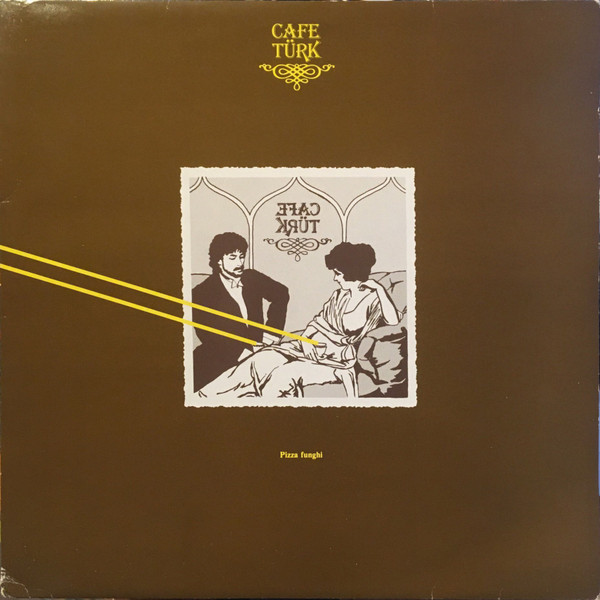
Café Türk – Söyledir (Early Take)
Originally released on the album ‘Pizza Funghi’ (Sound Concept Records MD 1003). Written by Metin Demiral. Publishing: Copyright Control (SUISA). Recorded 1983 in Zürich and Schaffhausen at Line In, Sound Concept and Picar Studios. P 1985 Sound Concept Records. Licensed courtesy of Zel Zele Records
Metin Damaral: Accordion, Baglama, Acoustic Guitar, Percussion, Synthesizer, Electric Guitar
Bruno Niederhäuser: Bass
Joni Schütt: Clarinet, Saxophone
Stefan Tevfik Bittlinger: Drums, Vibraphone, Piano
Deniz Demiral, Sibel Demiral Gök, Suzan Doğan Demiral: Vocals
That’s the way it is or that’s just the way it is!
The story of Café Türk begins in the early 1980s in Ramsen, close to the German border. Metin Demiral, the son of a Swiss mother and a Turkish father, had just graduated from high school and was focusing on his great passion – music. With a personal loan from his father, he set up a recording studio in his parents’ house and spent every free minute with his friend Stefan Bittlinger in the “Sound Concept Studio”.
Bittlinger plays the drums, bass and keyboard, among others with Real Muzzik and Metin plays keyboard, guitar, percussion and accordion. Their first production is a piece called ‘Haydi Yallah’. Metin raps to a disco beat, telling the story of a Turk who goes to Germany on foot and wants to party at a discotheque, where he gets kicked out with a kick in the ass. ‘Haydi Yallah’ means something like, “Let’s go!” But also, “Get lost!”
Metin told the story of the song to a music journalist writing for the music magazine Gong and who had the idea to make the ‘Haydi Yallah’ story Metin’s own. He said: “Celebi, the Turk who goes to Germany on foot with his whole kit and caboodle, that’s you!”, then took pictures of Metin with a backpack and a Turkish flag and wrote a full-page article.
Back in Schaffhausen, Metin told his co-producer about the article and the positive reactions to their song. Café Türk then sent a copy of ‘Haydi Yallah’ to the address of the Turkish record label Türküola in Cologne, Germany, after reading an advertisement that was placed by them in the Hürriyet: “Wanted, the best young Turkish band in Europe, a record production worth 5,000 Francs beckons.” And, they actually won the competition!
The two men in their mid-twenties were just about to sign a record deal but required a band for the production of an entire album. Metin was set as the front man, singer and guitarist, Bittlinger as the drummer. For the remainder of the band’s line-up they mobilised friends: Bruno Niederhauser on bass, Andi Bossert for a second guitar and Joni Schütt on saxophone and clarinet, as well as Metin’s sisters Suzan and Deniz for the Café Türk choir.
It was a time of awakening for subcultures and industrial ruins, including Schaffhausen. In 1984, Café Türk found a rehearsal room in the then empty old spinning mill for worsted yarn. Metin immediately built a room for his recording studio and moved all his equipment from Ramsen to the city. The songs for their first album were then recorded there and at the “Line in”, a 16-track studio in Zurich. It was called Pizza Funghi and, as well as ‘Haydi Yallah’, it included nine additional tracks.
Café Türk was rooted in traditional music from Turkey and the Near East, while renewing it with rap, rock and reggae. The song ‘Söyledir’ (pronounced Schöyledir) means, “That’s the way it is or that’s just the way it is!” On the one hand, the text is about love for reggae and that music in general should belong to everyone, even if it comes from Jamaica; thus, music is a universal commodity. Apart from that, it’s about the situation of Turkish emigrants or foreign workers in Europe who flounder for next to nothing but are treated like subhuman beings at the borders. In the song, it says: “It depends on the colour of your passport and not your skin.”
Metin goes on: “I had just a Turkish passport until I was 30 and, at that time, I was not even naturalised, despite my mother being Swiss! I thought it was total crap that I needed a visa for every European country. When thinking back it nowadays still makes me very angry, even after more than 40 years.”
Because the record contract with Türküola fell through, Café Türk, among other things, lacked distribution. Therefore, Metin and Bittlinger packed 250 copies in to their car and drove to Berlin. They lived in Kreuzberg for a week and sold pizza funghi on the street. In the record shop Scheissladen (shit store), operated by the German independent distributor EFA, they connected with the right people. And EFA bought 100 copies of the LP by two guys hailing from Schaffhausen.
Due to this deal, Café Türk reached an audience in Germany and, thereafter, they received concert inquiries from the German Federation of Trade Unions, who has many Turkish foreign worker members, or the Green Party. In Switzerland, Café Türk remained within subculture environments.
© 2020 Christian Erne and Metin Demiral, based on a conversation many years ago



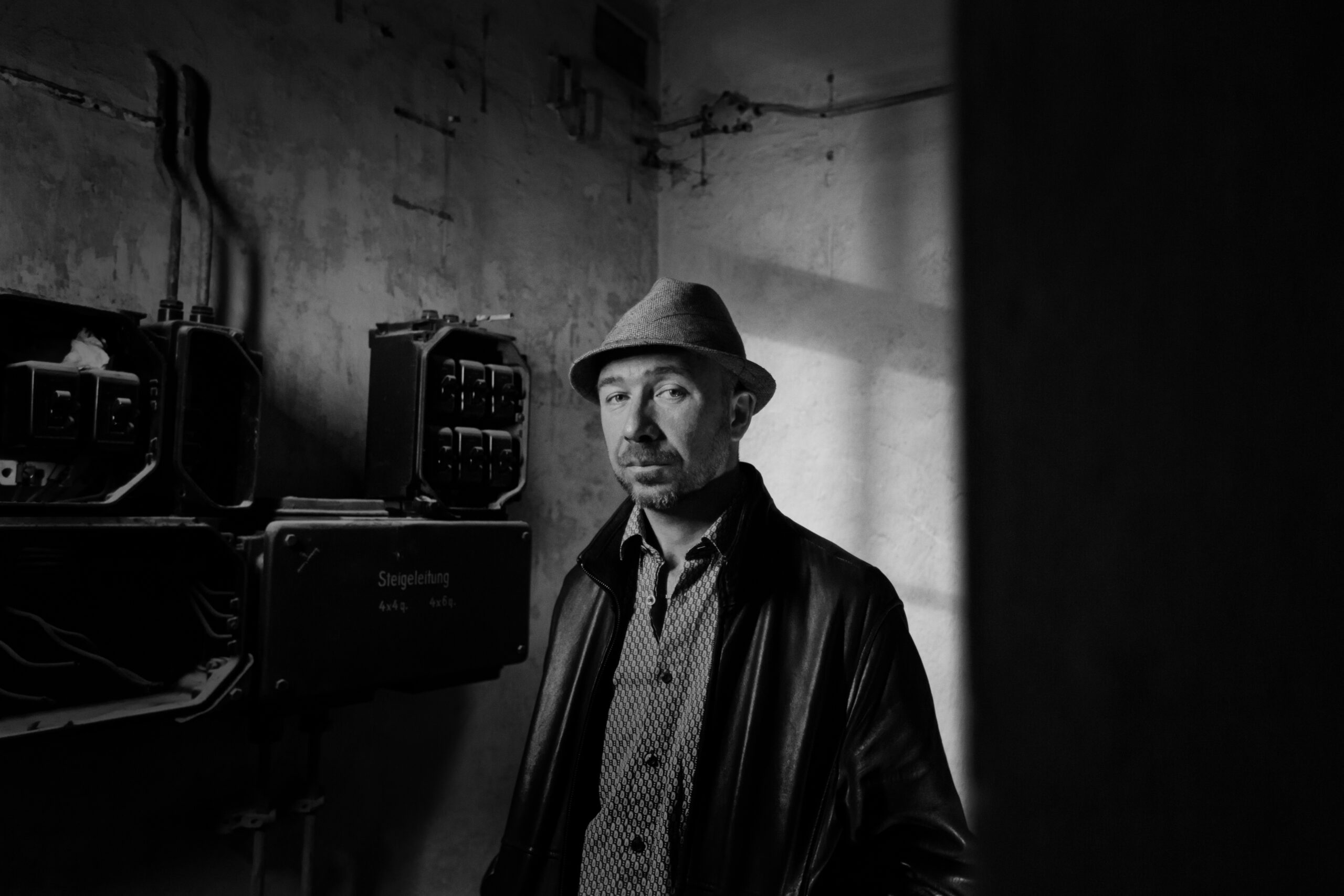
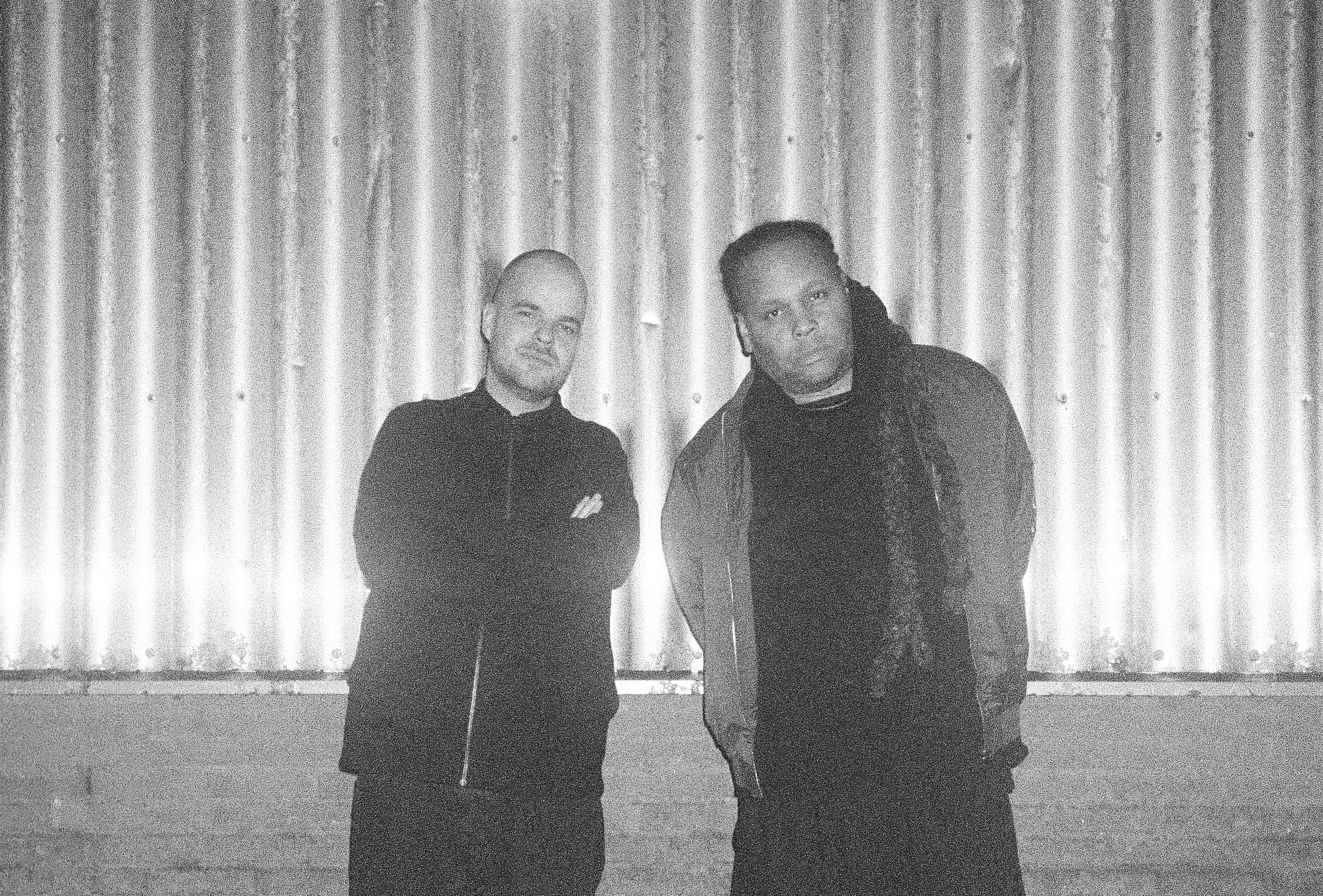
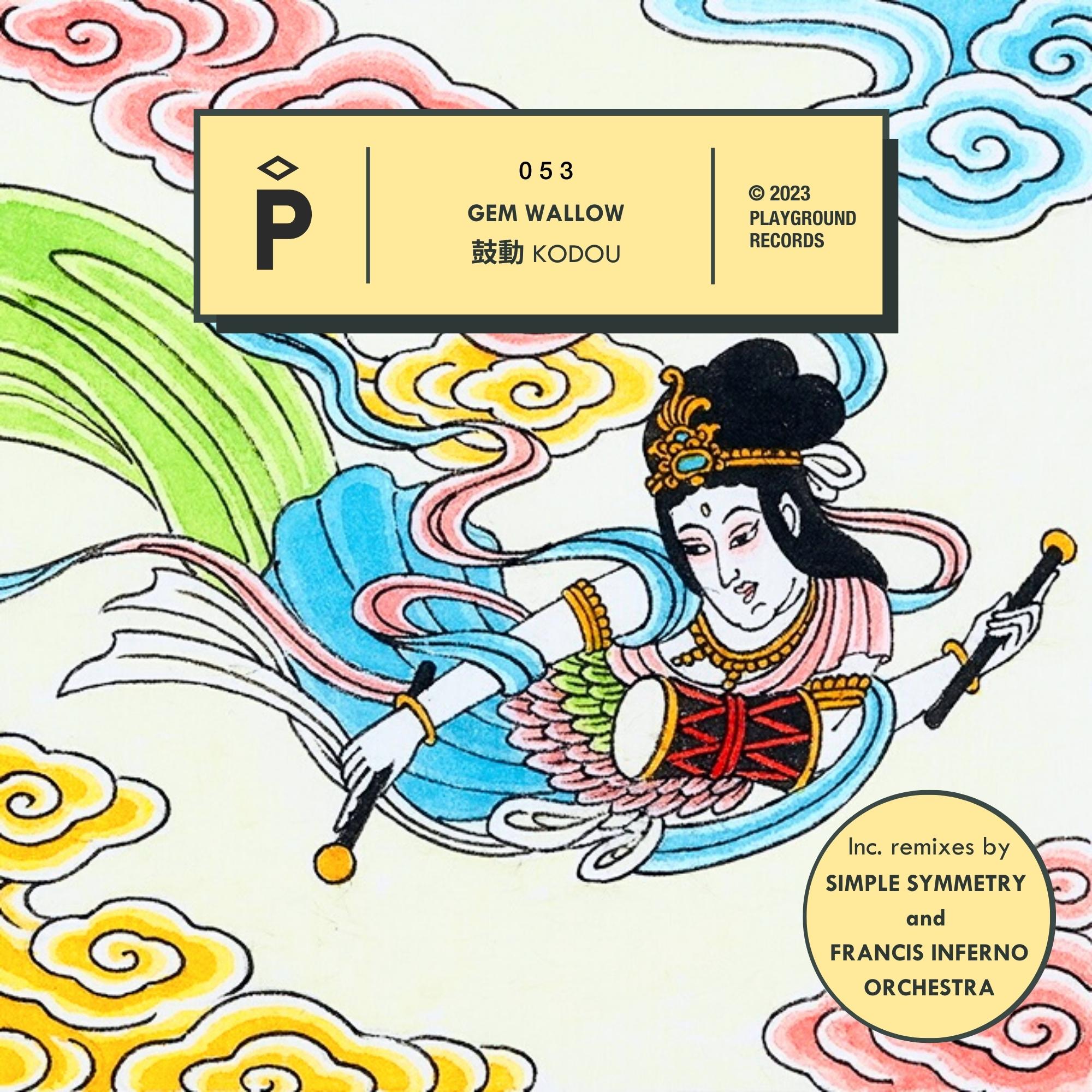










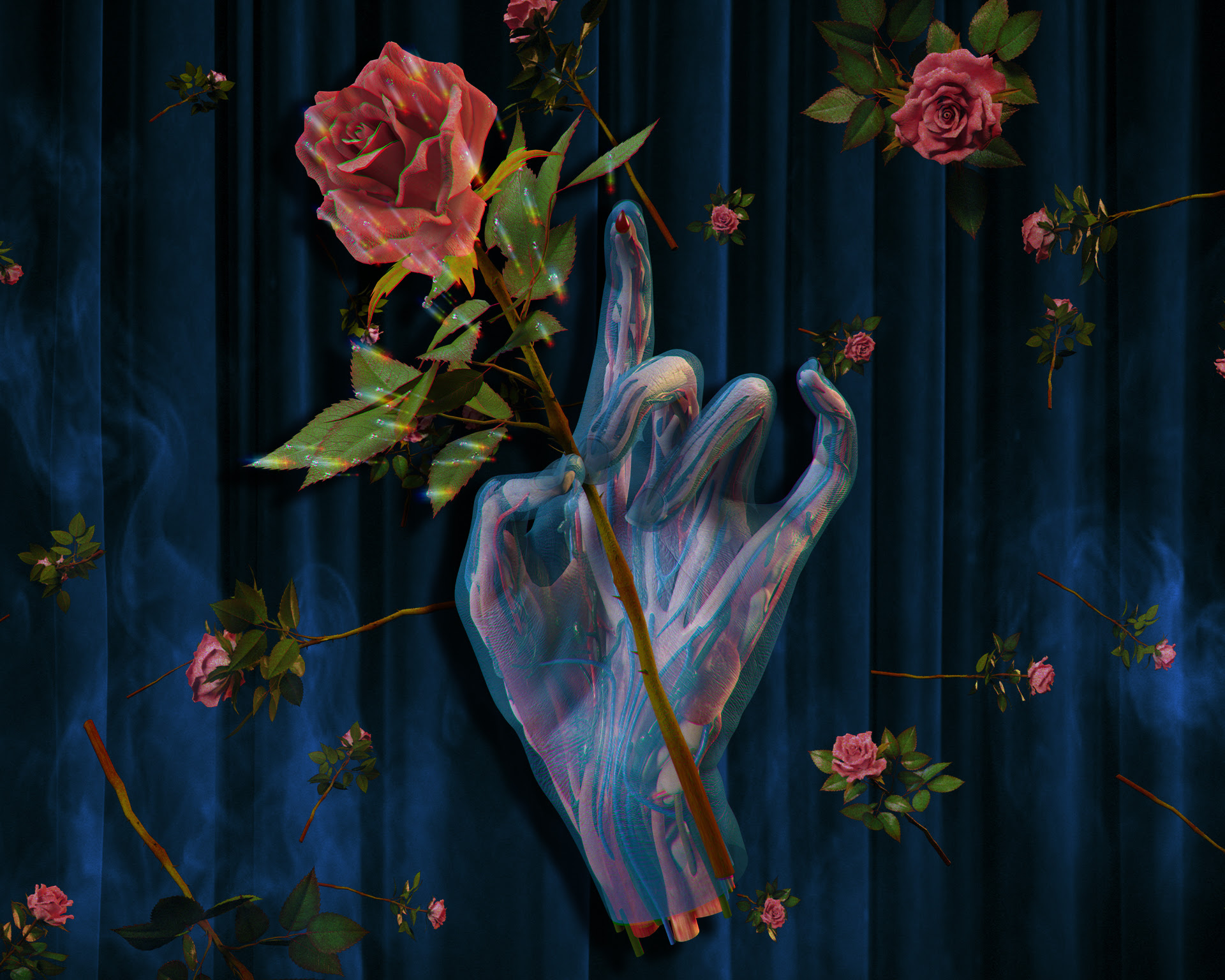

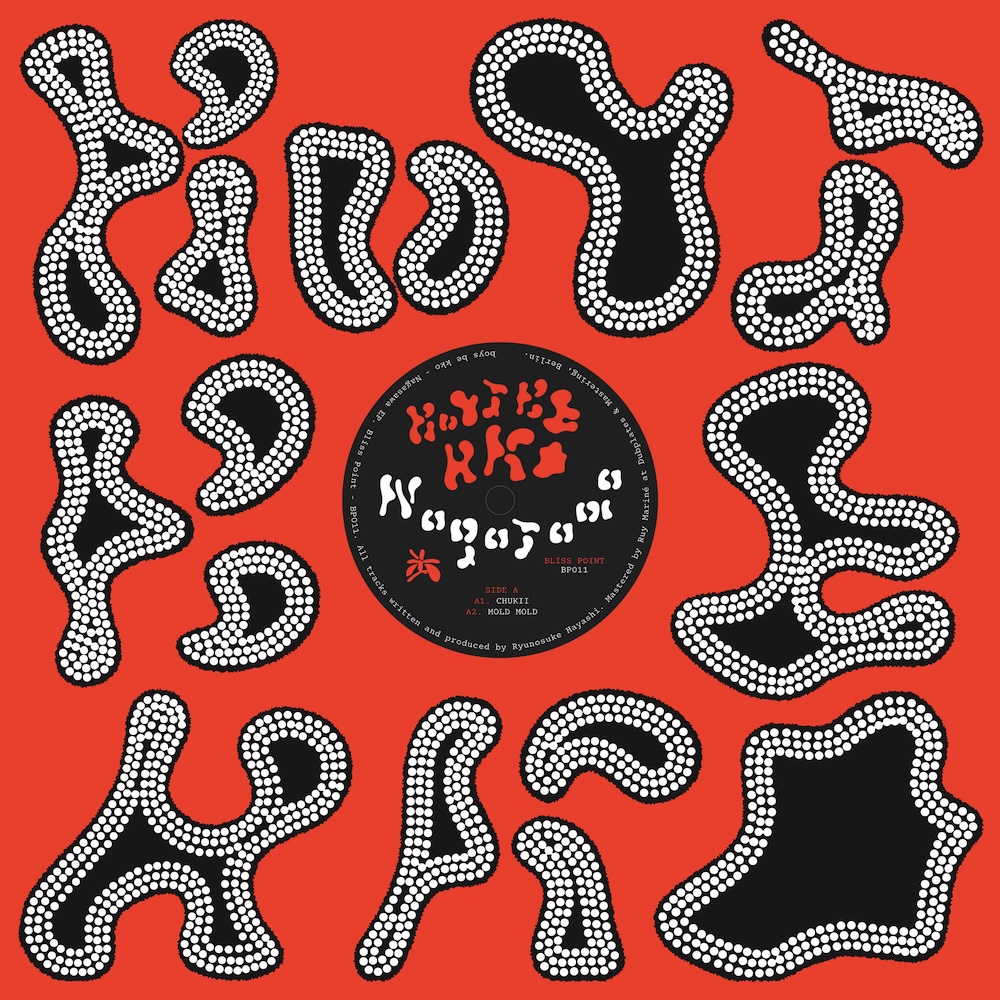
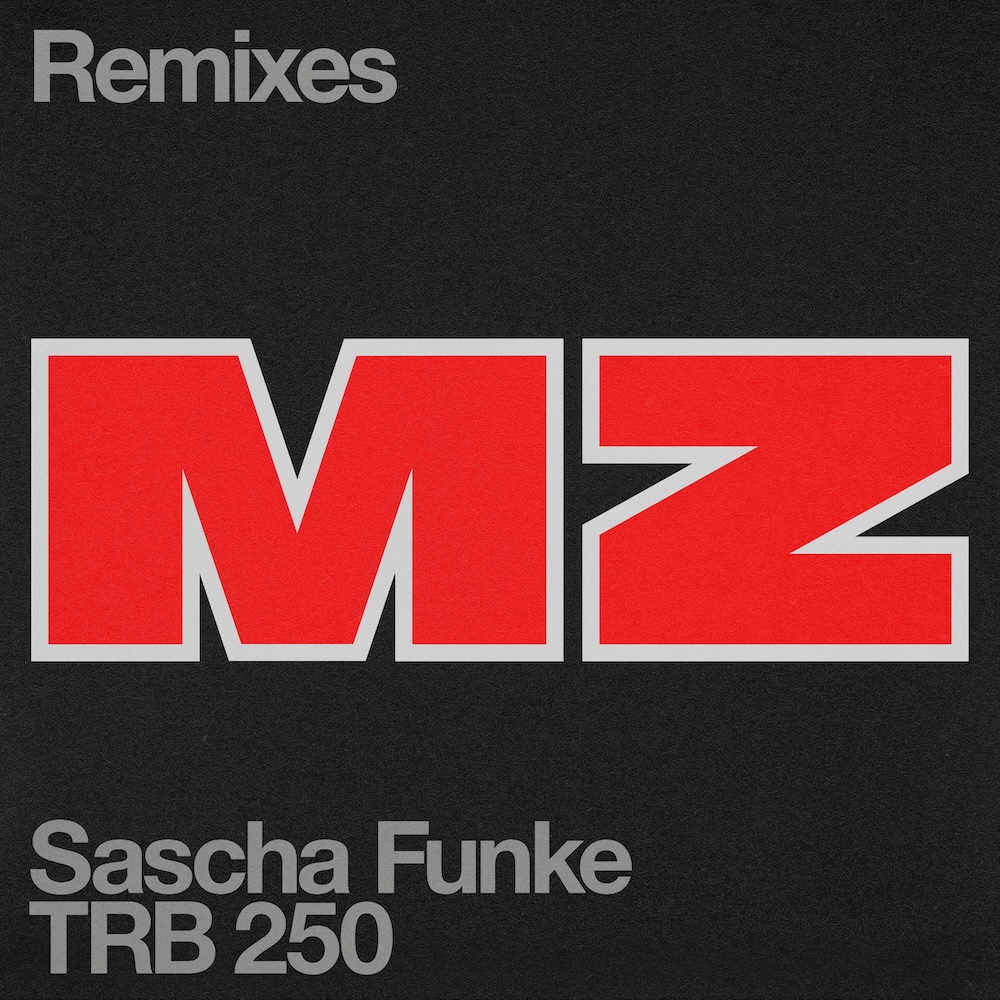



Must Reads
David Holmes – Humanity As An Act Of Resistance in three chapters
As a nation, the Irish have always had a profound relationship with the people of Palestine
Rotterdam – A City which Bounces Back
The Dutch city is in a state of constant revival
Going Remote.
Home swapping as a lifestyle choice
Trending track
Vels d’Èter
Glass Isle
Shop NowDreaming
Timothy Clerkin
Shop Now